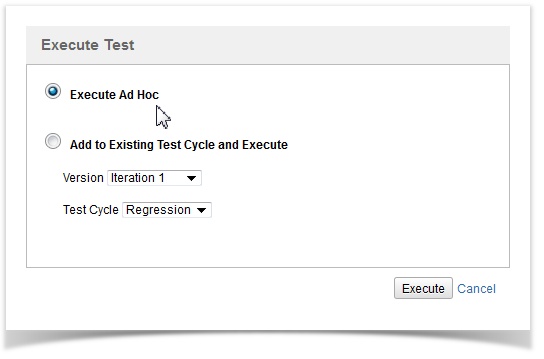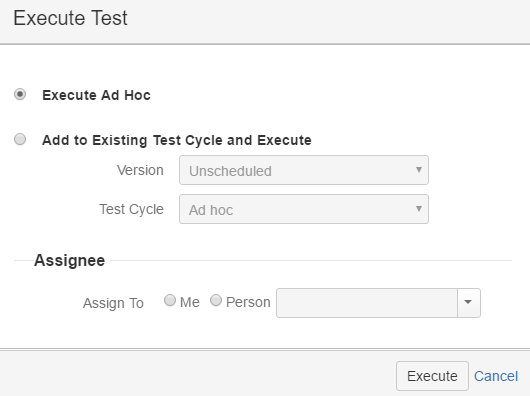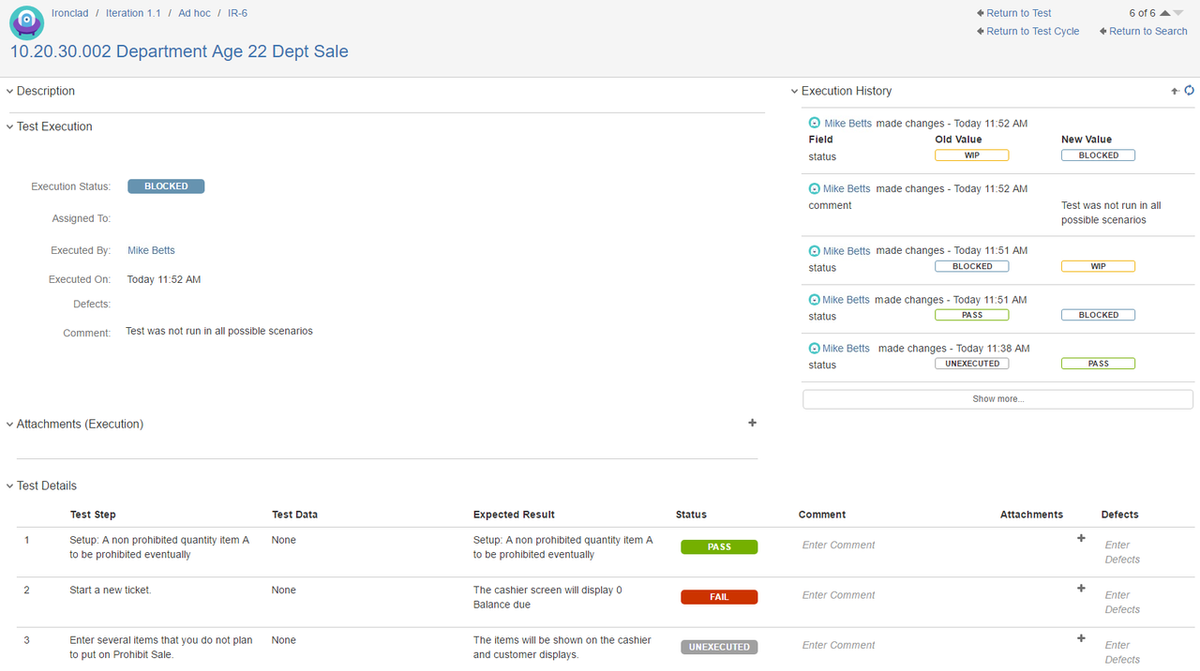If a test is being executed outside of a Test Cycle, then it is termed to be executed in an " Ad hoc " fashion. By default, every Version (or if one doesn't exist , "- Unscheduled") will have an Ad hoc cycle. All tests executed in an Ad hoc fashion will have the results summary reported in the test cycle.
Tests can be executed in an Ad hoc manner from the "Execute" button found in the toolbar of every issue.
This opens the "Execute Test" dialog as below where the "Execute Ad Hoc" option is selected by default. You could also select the "Add to Existing Test Cycle and Execute" option, pick a Version and pick the "Ad hoc" option - ensuring that the execution status gets recorded against that particular version albeit in an ad hoc manner. (If you need to record it against a particular test cycle, see Planning Test Cycles.)
Clicking on the "Execute" button will open the Execution page where details about the execution can be entered. Watch a short video on how to execute tests:
| Widget Connector | ||||||
|---|---|---|---|---|---|---|
|
- Execution Status: Selecting this field, a drop-down list of options are shown. The default statuses are UNEXECUTED, PASS, FAIL, WIP (Work in Progress) and BLOCKED. These statuses can be customized by your JIRA Administrator.
- Defects: A new defect can be created by clicking on the "Create New Issue" or by directly typing in text to get a list of possible matches. The drop down also lists existing issues that could be selected to associate with this execution.
- Comment: Details about the test execution can be entered here.
- Attachments: Files can be attached to this execution
- Execution History: This displays a running list of all changes that occurred to this test execution and who made those changes and when. This section can be collapsed if needed.
...
When a new defect is created this way (or an existing one is associated to this test execution), a remote link is created in that particular defect under the “Links” section. It shows the test with a link to this execution, the test cycle it was a part of and its current test execution status.








